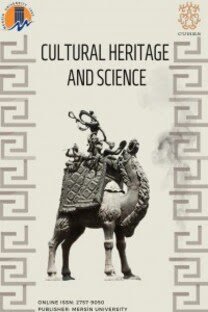A web scrapping and AI approach for archeologists to analyze the ancient cities
A web scrapping and AI approach for archeologists to analyze the ancient cities
___
- Kintigh, K. W., Altschul, J. H., Beaudry, M. C., Drennan, R. D., Kinzig, A. P., Kohler, T. A., Limp, W. F., Maschner, H. D. G., Michener, W. K., Pauketat, T. R., Peregrine, P., Sabloff, J. A., Wilkinson, T. J., Wright, H. T., & Zeder, M. A. (2014). Grand challenges for archaeology. Proceedings of the National Academy of Sciences, 111(3), 879–880. https://doi.org/10.1073/PNAS.1324000111
- Barceló, J. A. (2010, January). Computational intelligence in archaeology. State of the art. In Making History Interactive. Computer Applications and Quantitative Methods in Archaeology (CAA). Proceedings of the 37th International Conference (Vol. 11, p. 21). Williamsburg, Virginia, United States of America: Archaeopress.
- Kan, M. H., Keskin, H., Demir, N., Selim, S., Aslan, E., & Güneş, N. (2022). A Preliminary Field Work on Digital Heritage and the Use of Virtual Reality for Cultural Heritage Management. Advances in Hospitality and Tourism Research (AHTR), 10(4), 625-645.
- Korumaz, A. G., Dülgerler, O. N., & Yakar, M. (2011). Kültürel mirasin belgelenmesinde dijital yaklaşimlar. Selçuk Üniversitesi Mühendislik, Bilim ve Teknoloji Dergisi, 26(3), 67-83.
- Ulvi, A., Yakar, M., Yiğit, A., & Kaya, Y. (2019). The use of photogrammetric techniques in documenting cultural heritage: The Example of Aksaray Selime Sultan Tomb. Universal Journal of Engineering Science, 7(3), 64-73.
- Karataş, L., Alptekin, A., & Yakar, M. (2022). Creating Architectural Surveys of Traditional Buildings with the Help of Terrestrial Laser Scanning Method (TLS) and Orthophotos: Historical Diyarbakır Sur Mansion. Advanced LiDAR, 2(2), 54-63.
- Daems, D. (2020). A review and roadmap of online learning platforms and tutorials in digital archaeology. Advances in Archaeological Practice, 8(1), 87-92. https://doi.org/10.1017/aap.2019.47
- Luger, G. F. (2005). Artificial intelligence: structures and strategies for complex problem solving. Pearson education.
- Konar, A. (2006). Computational intelligence: principles, techniques and applications. Springer Science & Business Media.
- Chuvieco, E., & Congalton, R. G. (1989). Application of remote sensing and geographic information systems to forest fire hazard mapping. Remote sensing of Environment, 29(2), 147-159. https://doi.org/10.1016/0034-4257(89)90023-0
- Russel, S., & Norvig, P. (2013). Artificial intelligence: a modern approach (Vol. 256). London: Pearson Education Limited.
- AWS (2022). Machine Learning Image and Video Analysis- Amazon Rekognition. https://aws.amazon.com/rekognition/?nc1=h_ls
- Muthukadan, B. (2022). Selenium with Python — Selenium Python Bindings 2 documentation. https://selenium-python.readthedocs.io/
- Şahin, M. A., & Yakar, M. (2021). WebGIS technology and architectures. Advanced GIS, 1(1), 22-26.
- Berners-Lee, T., Hendler, J., & Lassila, O. (2001). The Semantic Web Scientific American, 284 (5), 34-43.
- Graham, S., Huffer, D., & Blackadar, J. (2020). Towards a digital sensorial archaeology as an experiment in distant viewing of the trade in human remains on Instagram. Heritage, 3(2), 208-227.
- https://ladvien.com/scraping-internet-for-magic-symbols/
- Martini, W. (2013). Perge. The Encyclopedia of Ancient History.
- Brandt, H. (2013). Phaselis. The Encyclopedia of Ancient History.
- Des Courtils, J. (2013). La ville de Xanthos (Lycie) et son environnement.
- Yayın Aralığı: Yılda 2 Sayı
- Başlangıç: 2020
- Yayıncı: Mersin Üniversitesi
Lale KARATAŞ, Murat DAL, Aydın ALPTEKİN, Murat YAKAR
A web scrapping and AI approach for archeologists to analyze the ancient cities
Nusret DEMİR, Cem Sönmez BOYOĞLU, Deniz KAYIKCI
3D modeling of Narlıgöl Natural Heritage with unmanned aerial vehicle data
Hacı Murat YILMAZ, Nusret AKTAN, Adem ÇOLAK, Aydan YAMAN
Azulejos as an architectural element within the scope of design and conservation
Example of 19th century industrial heritage: Ayvalık Tariş olive oil factory
